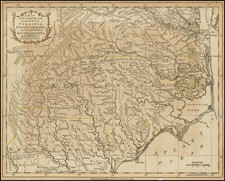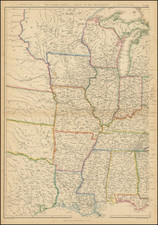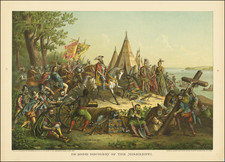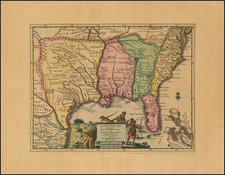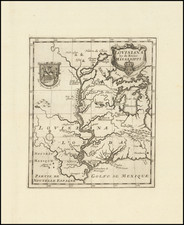Rare Nashville edition of James M. Safford's Geologist Map of Tennessee, published by J. Wagner.
Safford's first geological map was originally published in 1855, to accompany the first report of the State Geological Survey of Tennessee. James M. Safford of Cumberland University was also Tennessee State Geologist. Dr. Gerald Troost of the University of Nashville had begun the process of conducting a geological survey of the state in 1828 and was appointed the state's first State Geologist in 1831. During the life of the survey, he was assisted by noted geologists Arnold Guyot, David Dale Owens and Safford. Troost's work resulted in 8 reports between 1831 and 1851. The fifth report included the first geological map of the state.
While a later geological map of Tennesseee by Safford (1869), published by Taintor Brothers appears occasionally on the market, this is the first time we have ever seen the first edition of Safford's map offered for sale.
The lithographer, James E. Wagner, was an artist who worked in Nashville from 1840 to 1860, and exhibited his work at the Capitol in 1858 with what the Tennessee Historical Society called "some of our very best artists." Wagner also produced lithographs of Nashville in the years leading up to the Civil War, including an 1858 view of Nashville's Zollicoffer Bridge and levee on the Cumberland River.
The map is from the collection of George Osterheld. Osterheld came to America via New York in November 1850 with his friend Rudolf Eickmeyer, after participating in the unsuccessful campaign against Prussian control in South Germany and siege of the Bavarian fortresses of Landau and Kaisertlautern.
On September 1, 1854, Eickemeyer and Osterheld, opened a machine shop, the business at first being confined mainly to repairing tools used in the hat shops and other factories.
The partners were familiar with the art of hat manufacturing, and soon produced a small machine for making leather hat-bands. A year or two later they constructed the first sewing machine used to sew the leathers into the hats; the whip-stitch, then introduced, is retained to the present day in some of the best machines used for sewing purposes.
During the war, the partners added the making of revolvers to their work. In 1865, they invented and patented their first hat stretcher, and also a machine to pounce hats in a cone-shape. In the following year, together with Mr. Osterheld, he invented the first successful hat-blocking machine. From that time forward a specialty was made of hatting machinery at his shops; and he invented numerous improvements to his machines.
In 1869 the firm invented and perfected a driving mechanism for mowing machines. The machine, the Haymaker, received a bronze medal at the Centennial Exhibition at Philadelphia, and three similar medals were awarded to the firm of Osterheld & Eickemeyer for their other exhibits. Their New Champion Mower was later manufactured on an extensive scale at Springfield, Ohio, and in a modified form, as a one-horse mower, by a firm in Yonkers, which was dissolved some years ago.









